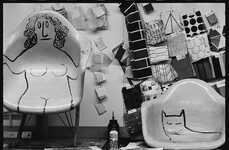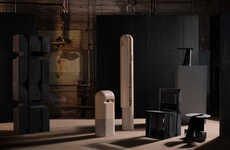
Are These Lookalikes Design Plagiarism or Shared Pool of Ideas?
BrainPicker — February 28, 2009 — Pop Culture
References: flickr & brainpickings.org
It’s all been done. At least, that’s every creator’s biggest fear. But, as it turns out, it’s not at all unfounded--one Flickr set keeps a fascinating archive of design overlap over the decades.
According to Brain Pickings, 'Similarities' takes "pairs of cultural artifacts, often separated by decades, and exposes anything from well-meaning homages to blatant rip-offs to the unfortunate overlaps of equally twisted minds."
The point, it seems, isn’t so much to point the finger at potential plagiarists as it is to shed new light on the creative process and challenge us to think about where ideas and inspiration come from.
According to Brain Pickings, 'Similarities' takes "pairs of cultural artifacts, often separated by decades, and exposes anything from well-meaning homages to blatant rip-offs to the unfortunate overlaps of equally twisted minds."
The point, it seems, isn’t so much to point the finger at potential plagiarists as it is to shed new light on the creative process and challenge us to think about where ideas and inspiration come from.
Trend Themes
1. Design Overlaps - Identifying design similarities and overlaps in different cultural artifacts can inspire new creative ideas and challenge the traditional concept of originality.
2. Creative Process Exploration - Examining the origins and sources of inspiration can lead to a deeper understanding of the creative process and spark innovative ideas.
3. Archiving Cultural Artifacts - Creating archives of design overlaps can provide valuable insights into historical and contemporary design trends.
Industry Implications
1. Art and Design - The art and design industry can benefit from exploring design overlaps to push the boundaries of creativity and inspiration.
2. Creative Education - Educational institutions can incorporate the study of design overlaps to foster critical thinking and encourage innovative approaches to design and creativity.
3. Intellectual Property Protection - Legal and intellectual property industries can use the analysis of design overlaps to distinguish between plagiarism, homage, and genuine innovation.
3.2
Score
Popularity
Activity
Freshness























